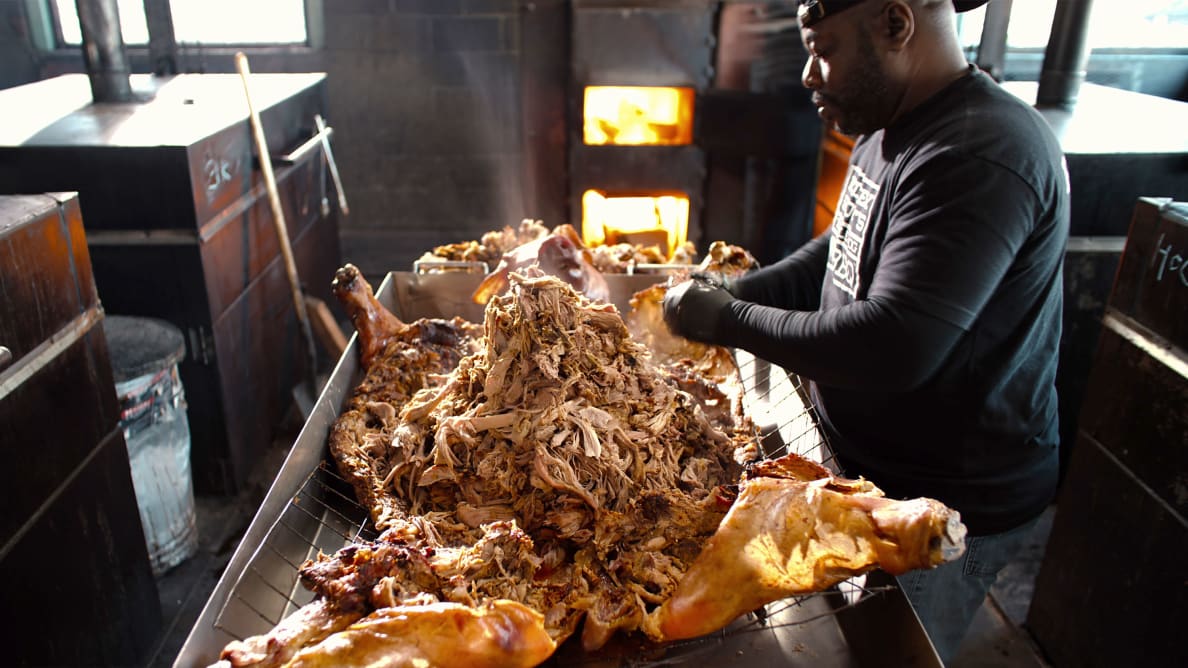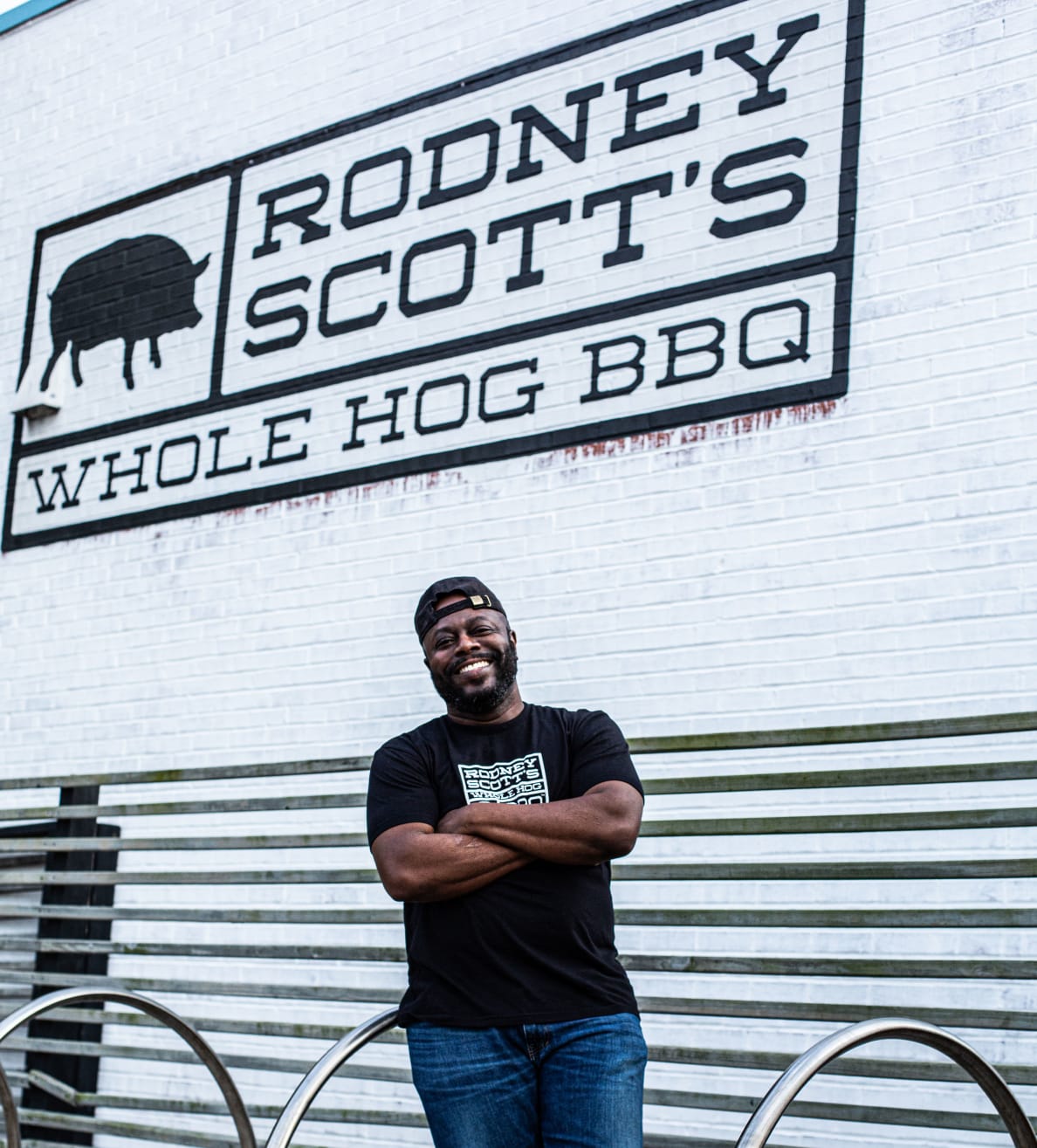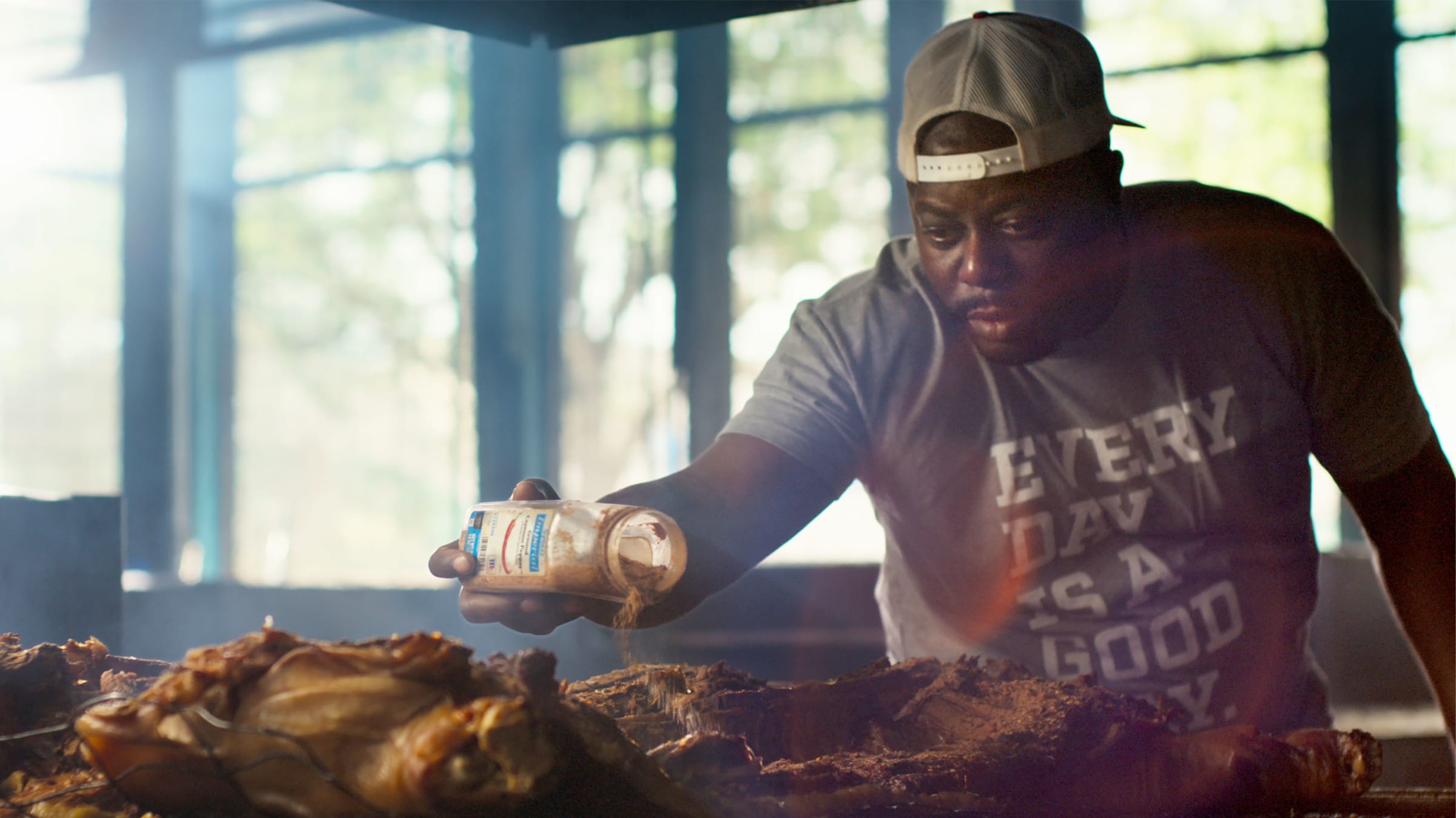I have been lucky enough in my life to have cooked three whole hogs.
Two of which, in all fairness, were mostly cooked by the time I arrived on the scene and were someone else’s responsibility—I was just there for the homestretch and to help butcher the meat. On the third, I was a full-fledged member of the team and what I learned in the process is that cooking a whole hog is…is a lot.
First of all, it takes an unbelievable amount of wood. Some folks use other heat sources, but it seems strange to take a process rooted so firmly in our notions of authenticity and then take a modern shortcut. I really can’t imagine setting out to cook a whole hog and then deciding to make it easier—this, of all things, isn’t about making life easier.
So, how much wood does it take? I couldn’t tell you. For one thing, people in the country lie about what constitutes a cord of wood the way people in cities lie about the square footage of apartments, and for much the same reason. Make it seem bigger if you want to brag or if you’re trying to sell it, and make it seem smaller if you’re trying to come off as efficient and economical. Seriously though, enough wood to have a fire in the living room hearth for a few weeks. Probably half a rick cord—a stack of wood that’s four-feet tall, four-feet long, and about 16-inches deep.
I also learned that pig cooking is greasy. I’m sure it’s not literally true that a whole hog on a fire produces exponentially more grease per pound than a butt on a smoker, but it certainly seems true. There’s a lot—a lot—of fat melting and dripping. Of course, that’s delicious, but it also mixes with all the soot and the ash. It’s the sort of project after which you’ll want to wash your blue jeans several times. Even still you’ll be smelling smoke for days. In fact, Rien Fertel, who wrote the book on cooking whole hogs, The One True Barbecue: Fire, Smoke, and the Pitmasters Who Cook the Whole Hog, admitted to me, “I just threw away my clothes.”

Netflix
On top of all that, there exists a not insubstantial fire risk. Folks discount the dangers of cooking fires in the same way they discount the possibility of getting lost in the woods, but if you speak to someone who has experienced either you can see in their eyes that they take this topic very seriously.
In fact, when I recently asked James Beard Award-winning Chef Rodney Scott, one of the stars of the new season of Netflix’s Chef’s Table and owner of Rodney Scott’s Whole Hog Barbecue in Charleston, South Carolina, for some advice about cooking, the first things he told me all involved fire safety.
He wanted to make sure that home cooks understand that they need to have plenty of room, so the pits have to be constructed well away from your house or vehicle. The point he was most adamant about making is that you have to “have a bucket of water and a fire extinguisher one step away.”
This is not idle conjecture coming from Scott—his original pit, in Hemingway, South Carolina, where he grew up, burned to the ground.
Keep in mind Scott seems to naturally overflow with optimism. In the Netflix show, he brightens the screen when he’s on it, and he brightened my day when I spoke with him. When I asked him how he was doing, he answered unflinchingly with what I think is fair to call his motto (it’s also the title of the book he’s working on): “Every day is a good day.”

Angie Mosier
So, considering all the hassles involved with cooking whole hogs, why would anyone do it?
Well, something electric happens when you present a cooked whole animal to a room full of hungry people. When my friend and I carried a 100-pound pig from the fire pit to the table, we were swarmed. My memory of that moment is like one of those shots from inside the limo in the Beatles’ A Hard Day’s Night movie. I have delivered countless platters to innumerable backyard parties, and I have never experienced anything like what happened that afternoon. Like a fever dream we chopped and pulled and mixed, lifting piles of pork onto a stream of endless plates, until we ran out of meat. Exhausted, I snacked on a bit of jowl and slunk away to collapse and sip a celebratory whiskey.
While I’ve heard people insist that whole hog barbecue is the first and the purest form of barbecue, the ur barbecue if you will, this may or may not be factual. “The historical record on that is sketchy,” Fertel told me. However, “what really appeals to us is less history and more myth. It’s all about the mythos of this. The primal mythic urge to slay a beast and cook it. There’s something very poetic about it.”
It seems to me that whole hog barbecue is really about the feast. You don’t, upon the return of the prodigal son, get a few pounds of burgers and grill them. You slay the whole calf.
The other side of the coin when it comes to cooking whole hogs has to do with the private moments. It takes a long time. Standing around a grill is fun, and people are drawn to backyard fire pits. The stories come out under those stars, around those fires. With whole hog, you add responsibility and stretch out the time.
“You get a lot of unbelievable stories told around pits, and that’s one of the good things about cooking whole hogs for 12 hours,” said Scott. “All I’m saying is that whole hog cooking can lead to a whole lotta lies, especially when alcohol is involved.”
But the benefits are not entirely ethereal.
“The flavor profile is different. I can tell,” Scott said. “Each part compliments the next. If I’m pulling a whole hog, I can take belly and add to the loin part, the shoulder of the ham, and you got a great bite.”
Which is, after all, what it’s all about. Scott did give me some advice for cooking barbecue at home. First of all, he’s a big believer in scoring the meat by cutting on the meat side (as opposed to the fatty side) all the way down to the bone. He likes that the seasoning, the sauce and the heat can get in there. This allows him to easily ascertain the doneness of the roast, as well, by grabbing the exposed bone. “Wiggle the knuckle,” he said, “if that knuckle twists completely in the ham or the shoulder and slides out, then your animal is done.”
Asked about the state of the industry in 2020, Scott can only look forward to brighter days, which he feels confident are ahead not just for his own restaurants in South Carolina and Alabama (which were popular before the television show and are now surging) but for everyone.
“I see 2020 as the most difficult year of our lives. I also see 2020 as a boost and an inspiration to be a lot more careful, to be a lot more appreciative.”
If ever there were a person designed to rise from the ashes, that person is Rodney Scott. When you’re at the bottom, he said: “In Rodney Scott’s mind, there’s only one way to go…up.”
Read more here

